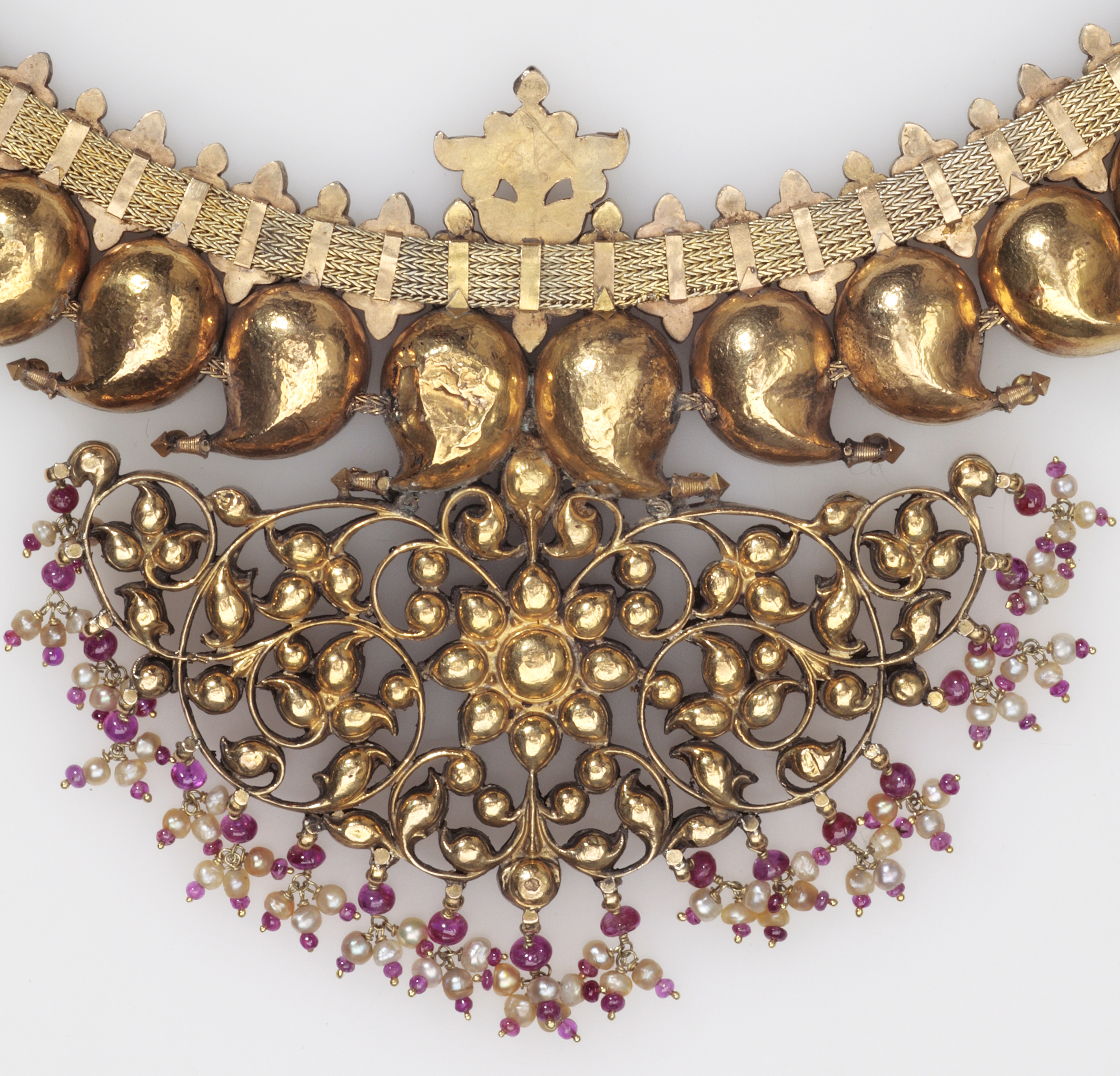 Print Page
Print Page
 Print Page
Print Page
Location: South India, probably Tamil Nadu
Materials: gold, set with diamonds, colourless zircon and beryl, part-foiled rubies, emeralds, in gold kundan settings, and pendant pearls
Dimensions: 63.5cm (overall length); 10.5 x 12cm (central element)
Accession Number: JLY 1261
Other Notes:
The necklace, which would have been worn by a married woman, consists of 32 mango-shaped units and a large central openwork element, threaded on four lengths of gold chain. Each unit is attached to small six-petalled rosettes. The tips of the mango-shaped elements are set on the front with a cabochon ruby and point outwards on each side of the necklace. Between each of the units is a spacer designed to fit the interstices.
At the centre of the openwork element is an eight-petalled rosette from which symmetrical scrolls of buds and foliage issue. Clusters of ruby and pearls are attached to its lower edge.
The hinge-and-clasp elements are attached to two openwork ruby- and emerald-set S-scrolls. These appear as addorsed birds when the clasp is closed. The backs of the clasp elements are engraved with birds, recalling the design on the front. Although the reverse of the necklace is otherwise mostly undecorated, the backs of the units and the openwork element are worked in three dimensions.
Bibliography:
P. Moura Carvalho, Gems and Jewels of Mughal India. Jewelled and enamelled objects from the 16th to 20th centuries, The Nasser D. Khalili Collection of Islamic Art, volume XVIII, London 2010, cat.104, p.194–5.
J.M. Rogers, The Arts of Islam. Masterpieces from the Khalili Collection, London 2010, cat.443, pp.368–9.


